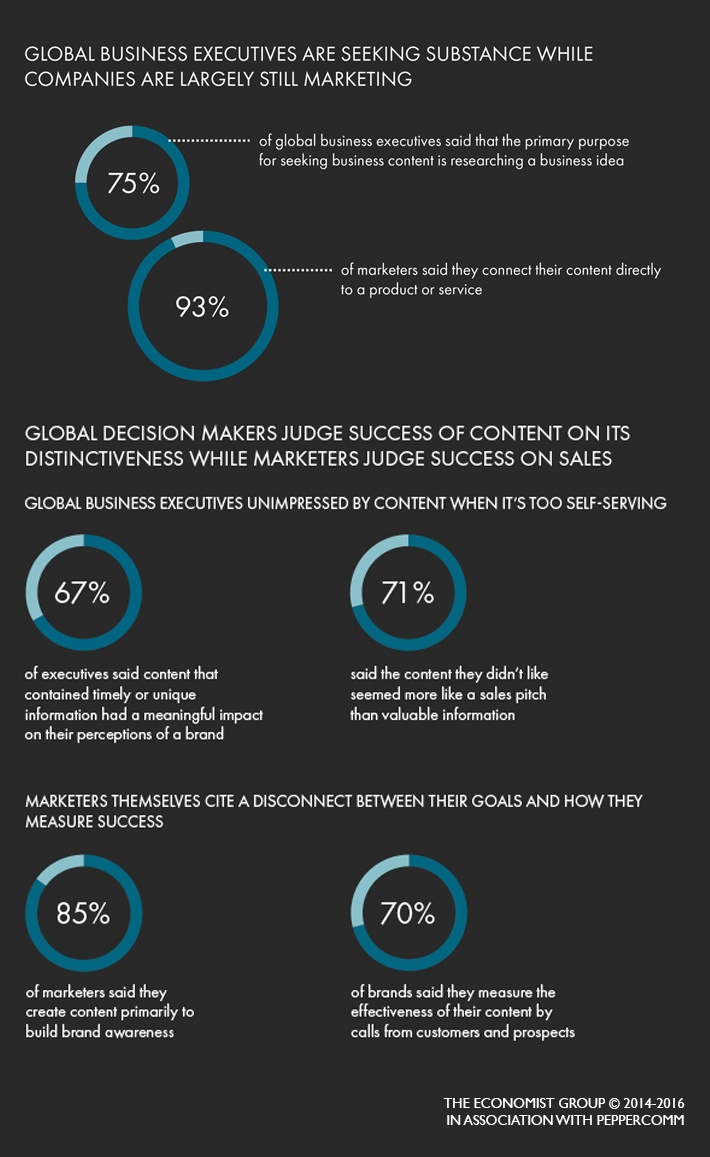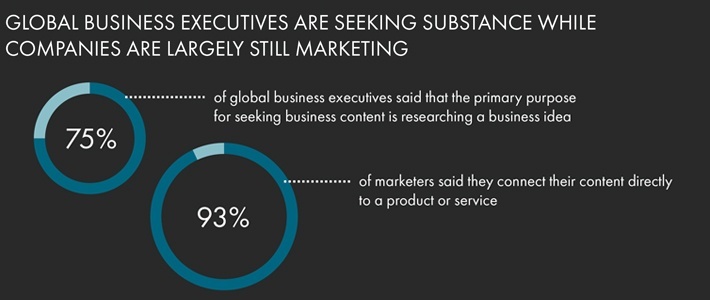Earlier this year, a survey from The Economist Group revealed a pretty damning picture of the state of B2B content, exposing a yawning gap between what firms are creating and what their audiences are looking for.
A basic yardstick of the success of any piece of content is whether it engages its audience. Yet it seems B2B marketers continue to fall short in this regard.
There’s no denying the opportunity. Three out of every four business executives turn to content to research a business idea, and say they find the views of their industry and new ideas most valuable.
Yet 93% of B2B marketers connect their content directly to a product or service – a fundamental mismatch that undermines their chances of success.
Truly engaging content starts with the audience and their business challenges. Buyers want answers to their questions and care little about your products and services.
So why do B2B firms get this wrong?
It’s partly structural – they are conditioned to think and go to market along product and service lines simply because the business is structured that way. But it’s mostly commercial – the constant need to contribute to the bottom line means they are under pressure to push rather than pull.
The subtler sell
Creating branded content that does not overtly promote a product or service does not mean forgoing a return on investment.
To find the perfect balance, firms need to focus on the ‘sweet spot’ that connects what they want with what their clients want. It’s about providing truly helpful content in areas where you can truly help and where you have a credible voice.
Choosing topics that are aligned with your service offering makes sense as long as you are addressing client issues and aiming to start conversations, not just broadcasting those services.
In this way you will earn your audience’s trust as a valuable source of information, and any leads that follow as a result of that trust will be ones your sales teams can readily convert.
Intention disconnected from expectation
The Economist’s survey also exposed a disconnect between intention and expectation. Eighty-five percent of B2B firms say the primary reason for creating content is to build brand awareness. Yet 70% say they measure its effectiveness by the number of calls from prospects or customers.
Marketers won’t achieve desired results if they’re not aligned with their intentions. We believe this is because many still lack a formal documented strategy. The objectives should be clearly expressed from the outset, key performance indicators should be defined and how those chosen goals will be achieved should be planned.
An undocumented strategy is unlikely to be well-enough conceived, communicated or managed to actually work.
B2B marketers need to reconnect to avoid damage to credibility
The problem with poorly conceived content is that not only does it not produce the results you want but it can actually produce those you don’t, in the form of damaged reputation.
Nearly nine in ten business readers say the firm a piece of content comes from is important but 35% report they have encountered content from companies that turned them off because they did not perceive it to be trustworthy.
Buyers trust content that is insightful, authoritative and useful. It’s no surprise to see trade press and independent publications rating highest in this respect in The Economist’s analysis.
Thinking more like these publishers – putting your audience’s needs first and gathering relevant opinion, comment and evidence to support your story – is the most effective way for B2B firms to regain trust and credibility.



